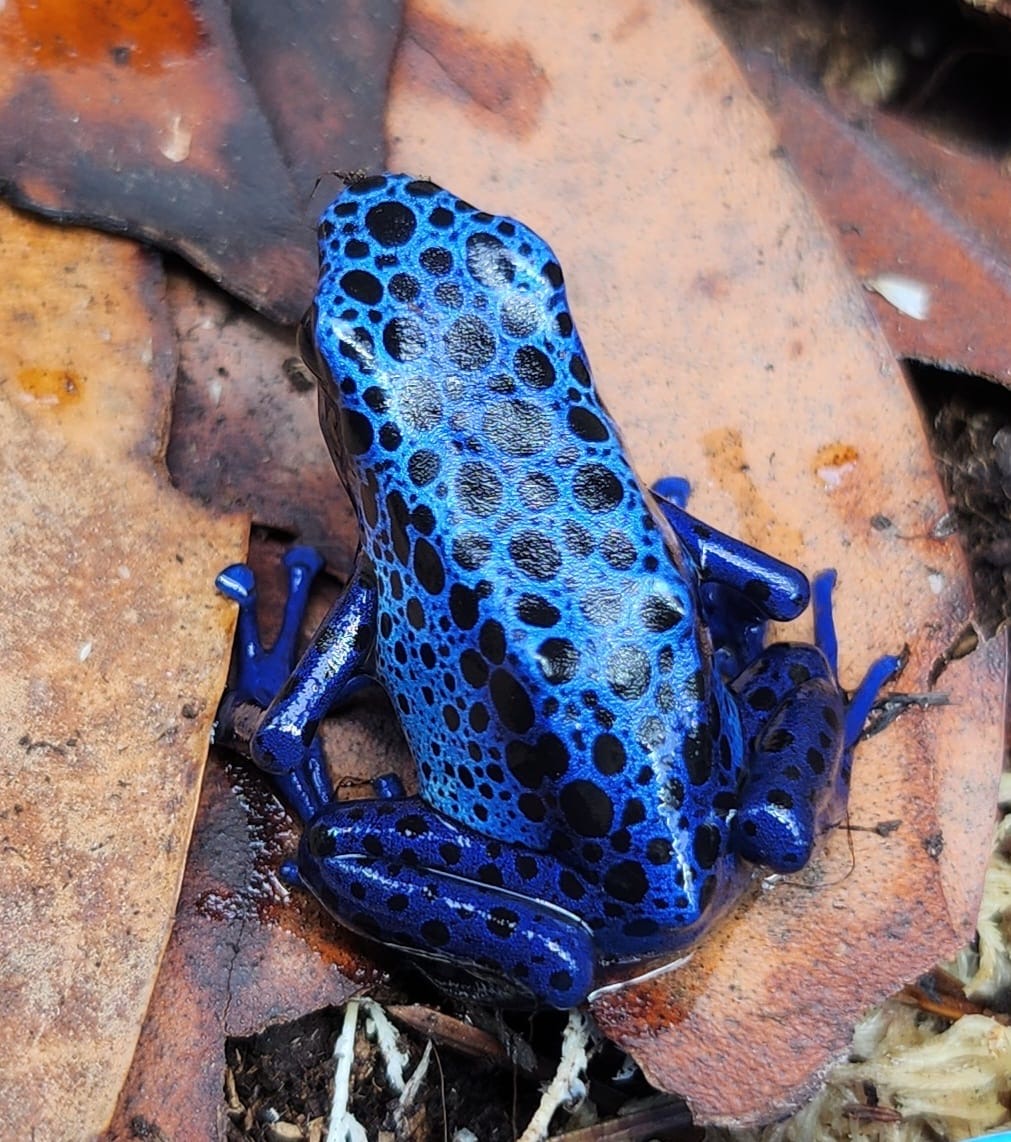Description
Blue & Black Dart Frog (Dendrobates Azureus)
Habitat Setup:
1. Enclosure: A glass terrarium with a secure lid is recommended to prevent escapes and maintain humidity. A 10-gallon tank is suitable for a pair of dart frogs.
2. Substrate: Use a substrate that retains moisture well, such as coconut husk fiber or sphagnum moss. It should be at least 2-3 inches deep to provide humidity and allow for burrowing.
3. Decoration: Include live plants (e.g., bromeliads, ferns) for cover and climbing surfaces. Ensure all plants are non-toxic to frogs. Provide hiding spots with cork bark or driftwood.
4. Water Feature: A shallow water dish or small pond can be included for soaking and breeding. Ensure it's dechlorinated and cleaned regularly.
5. Humidity: Maintain high humidity levels (around 80-100%) by misting the enclosure at least twice daily. A hygrometer can help monitor humidity levels.
6. Temperature: Keep temperatures around 72-80°F (22-27°C) during the day, with a slight drop at night. A reptile heat mat or low-wattage heat lamp can provide supplemental heating if needed.
Feeding:
1. Diet: Blue & Black Dart Frogs primarily eat small insects such as fruit flies, springtails, and pinhead crickets. Offer a variety of prey items to ensure nutritional balance.
2. Feeding Schedule: Feed adult frogs every other day, offering as many prey items as they will consume in a few minutes. Juveniles may require daily feedings.
3. Supplementation: Dust prey items with a calcium and vitamin D3 supplement twice a week to ensure proper nutrition and prevent metabolic bone disease.
Maintenance:
1. Cleaning: Spot-clean the enclosure daily to remove waste and uneaten food. Perform a thorough cleaning of the enclosure monthly, replacing substrate and cleaning decor.
2. Water: Change the water dish regularly to prevent bacterial growth. Ensure it's always clean and filled with dechlorinated water.
3. Health Check: Monitor your frogs for signs of illness, such as lethargy, loss of appetite, or abnormal behaviour. Seek veterinary care if any health concerns arise.
Handling:
1. Limited Handling: Dart frogs have delicate skin that can absorb toxins and oils from human hands. Limit handling to essential maintenance tasks to minimize stress and potential harm to the frogs.
2. Use Gloves: If handling is necessary, wear disposable gloves to protect the frogs and prevent contamination of their skin.
3. Gentle Approach: When handling, approach the frog slowly and avoid sudden movements. Support the frog's body and avoid squeezing or restraining it.
"This is the actual animal you will receive"
Order and get 90 reward points
Earn points by signing up for our rewards program


